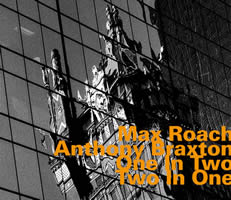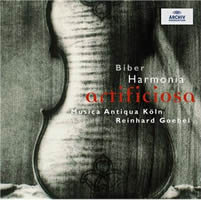Random Noise 9: Philip Glass as Culture Meter, etc.
|
[A version of this piece appeared first in OnSoundandMusic.com. As ever, we thank the publisher and editor for their kind permission to post it in La Folia. M.S.] Mike Silverton [December 2004.] I turn 70 on my next birthday. Entirely apart from pissing me off, the event probably says something about attitudes — young, curious, hospitable sponge hardens into old, cautious, nay-saying rock. Also relevant: Excepting a brief infatuation with the opera Einstein on the Beach, I confess to a long and lively loathing of Philip Glass’ music. And yet one wants to be fair. Open-minded. Yes, children, even now. The arrival of a promotional Cantaloupe CD, Glass’ Music in Fifths and Two Pages, provided the opportunity. I put the disc in the player and endured around a minute of the first work and less of the second. In shrinkspeak this is called negative reinforcement. The colorfully skimpy, close to illegible insert tells us zilch. You must go to http://www.cantaloupemusic.com/ for information, such as it is: “In ‘Music in Fifths’ and ‘Two Pages,’ Philip Glass’s ideas are at their most basic, using only addition and subtraction of notes in simple scales to create epic, hypnotic musical forms.” About as epic as a highway median and hypnotic as a stamping machine. Early Glass, but no dates. As a guess, ’67 or thereabout. I haven’t troubled to Google, the dominant mood being, Get thee hence, assaultive stuff! The music lover for whom classical’s multi-century inventory occupies the core of his interests thinks of present-day pop, that gallery of calculated oddities, if he thinks of it at all, more or less dismissively. Nothing to do with me, says he or she. Indeed, but one didn’t grow up in a vacuum. Back in blue-collar Flatbush, my parents gazed at Liberace’s swish-kitschy antics in granular black-&-white. Michael Jackson is not without antecedents, and androgyny is a fascinating subject. Mall-friendly Eros has its cheesy attractions, and Britney and Beyoncé are good-looking women, and…. High culture and low, a preterit curiosity. It’s no longer possible — perhaps make that practical — to think in such terms. And yet we of a certain age cling to the Old Ways. (I’m beginning to think of this little screed as a string of and-yets spanning pitfalls. Pratfalls? Those too.) To position where I’m heading approximately where I’m heading, the culture-vulture seeks refuge from the madding crowd in — well, the finer things of life. Classical music entered its modernist aspect before I was born and really took off when I was still a lad, where it engaged my interest, albeit spottily. Had I not grown up within the reach of several classical-music transmitters, matters would probably have worked out differently. I’m especially grateful to the city’s municipal station, WNYC, for its then broadcasts of new and recent classical music, which I’d best start calling art music, to distinguish the broad category, classical, from the historic period, upper-case Classical (preceded by the Baroque and followed by the Romantic, thence to the Modern). Thus this listener’s receptivity. Art-music lovers are rare enough. In the US of A, the classical side of record sales languishes somewhere below five percent. Hardly worth troubling about. An art-music lover with an affection for new music is a rarer bird still. But, from where the cognoscenti sit, the smaller and therefore more discriminating its public, the worthier the object of one’s attention. That’s nonsense of course but it’s fun to enlist oneself among the Putatively Happy Few. When Glass came on the scene, music’s smart set — Downtown — approved. Now there’s the thing. Call it the initiation rite. One enters the inner circle by enduring pain, e.g., the music in question’s mind-numbing, cretinous aggressions. Here would certainly be the place to mention that stupefaction, stupor and stupid are cognates. (Forget stupendous. That’s a different story.) Imagine yourself in a restaurant with a three-year-old who persists in pounding the table with a salt shaker and you’ve got the picture. “See what I can endure? I belong!” The thing is to be cool. Morton Feldman’s music is also repetitive — in an infinitely subtler and more sensuous way. Even as an unqualified admirer, I know in my old bones that I could never sit through a live performance of Feldman’s String Quartet Two. It’s a wonder the players can — the work goes on for hours. At the very least, I would have to go to the can. And more than once. Heroic duration and understatement figure prominently among Feldman’s épater le bourgeois affronts. A noted critic wrote about attending an SQ2 performance spellbound, start to finish, glued to his seat. “See what I can endure? I belong!” (I don’t believe him for a moment. If ever one was, SQ2 is the ideal candidate for home-listening, preferably late at night or very early in the morning, with as many breaks as one pleases. I recommend two performances with equal enthusiasm: Mode 112, with the FLUX Quartet, five CDs or one DVD-A, and hat[now]ART 4-144, with members of the Netherlands-based Ives Ensemble, on four CDs. As the extra disc suggests, the mode performance is the longer of the two, not that you’d be likely to notice.) * * * A few tasty items.
Remaining with hatART, that gem of a label, a just-reissued four-carat ruby: One in Two / Two in One, with Max Roach, percussion, gongs and tuned cymbals; Anthony Braxton, alto, soprano and sopranino saxes, contrabass clarinet, clarinet and flute (hatOLOGY 601). Peter Pfister, a longtime hatART tech and as good as they get, taped the event before an enthusiastic audience at the Willisau (Switzerland) Jazz Festival in 1979. Frequent hatART annotator Art Lange’s original notes are dated 1989, his revision, 2002. Lange covers the circumstances of this fruitful collaboration more than adequately. Enough for now to mention that both performers relish invention, Braxton notoriously so. Strategies have their place, but the pleasure is in the listening. I find a great deal of improvisational music self-indulgent and boring. One in Two / Two in One is many cuts above the ruck. There’s a good deal of free-jazz brawling, period-jazz gestures, unascribable wit and a soupçon of sublimity. Certainly, 75 minutes of solos and interplay are bound to sag. The music’s bright cavortings more than compensate for the infrequent letdowns. As one example of celestial mechanics, in the first part, One in Two, Roach’s tuned cymbals in conversation with Braxton’s reed-work at hearing’s upper reaches astonish and amuse.
From the recent to distant Then, the music of Heinrich Biber (1644-1704). Violinist Reinhard Goebel performs on two Deutsche Grammophon Archiv releases, one recent, the other probably still available. Archiv Produktion 474 965-2, two CDs, issued in 2004, offers Harmonia artificioso-arioso, diversi mode accordata, with members of Musica Antiqua Köln (Goebel and Stephan Schardt, violin, violino piccolo, viola d’amore; Karlheinz Steeb, viola; Klaus-Dieter Brandt, cello; Léon Berben, harpsichord). On Archiv Produktion 431 656-2, two CDs, issued in 1991, we have the no less than heavenly Rosenkranz-Sonaten, otherwise known as the Mystery or Rosary Sonatas, with Reinhard Goebel, solo violin; Phoebe Carrai, cello; Konrad Junghänel, lute; Andreas Spering, harpsichord and organ. Harmonia artificioso is an abundantly recommendable delight. However, if you must limit yourself to a single toe-dip, please — please! — choose Die Rosenkranz-Sonaten. The Vatican connection need not impede. Atheists will enjoy these 16 treasures no less than the devout. Indeed, were it not for the title, no one would suspect their source of inspiration. Pick a Vivaldi favorite. The Four Seasons, say. How many times can you play it before it begins to pall? One outstanding mystery of the Mystery Sonatas is the music’s staying power. Listen to the two discs as often as you please. The music’s fascinations persist. For a stab at an insight into wherefore, Biber directs a broad palette of scordatura virtuosity toward spiritual ends. The music’s brilliant turns address the infinite. The listener eavesdrops on rather more than mere displays of craftsmanship. (Scordatura, literally “mistunings,” refer to unconventional tunings of stringed instruments, including the lute, to achieve unusual chordal effects, with Biber, in his lifetime a celebrated virtuoso performer as well as composer, the best-known practitioner.) Violinist Goebel brings an elegance, ease of execution and abundant understanding to these performances. He is, in other words, an ideal musician: chops and thought in equal measure. A bit of professorial foolishness sticks with me. Back in my college days, a much-admired teacher allowed as how it’s unnecessary to trouble oneself with music of the Baroque apart from Bach, who said it all. A summation, if you will. This is the kind of thinking that produces however many volumes of The World’s Greatest These & Those. Biber I would characterize as Something Else Again. [Biberites should see W.A. Grieve-Smith’s superb essay in our archive. W.M.]
[More Mike Silverton, Random Noise]
[Previous Article:
End-of-the-Year Ramble]
[Next Article:
Walt's Ratatouille 7.]
|


